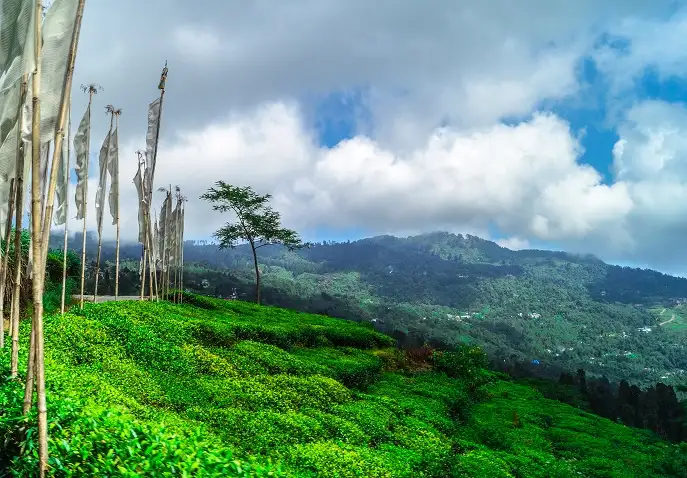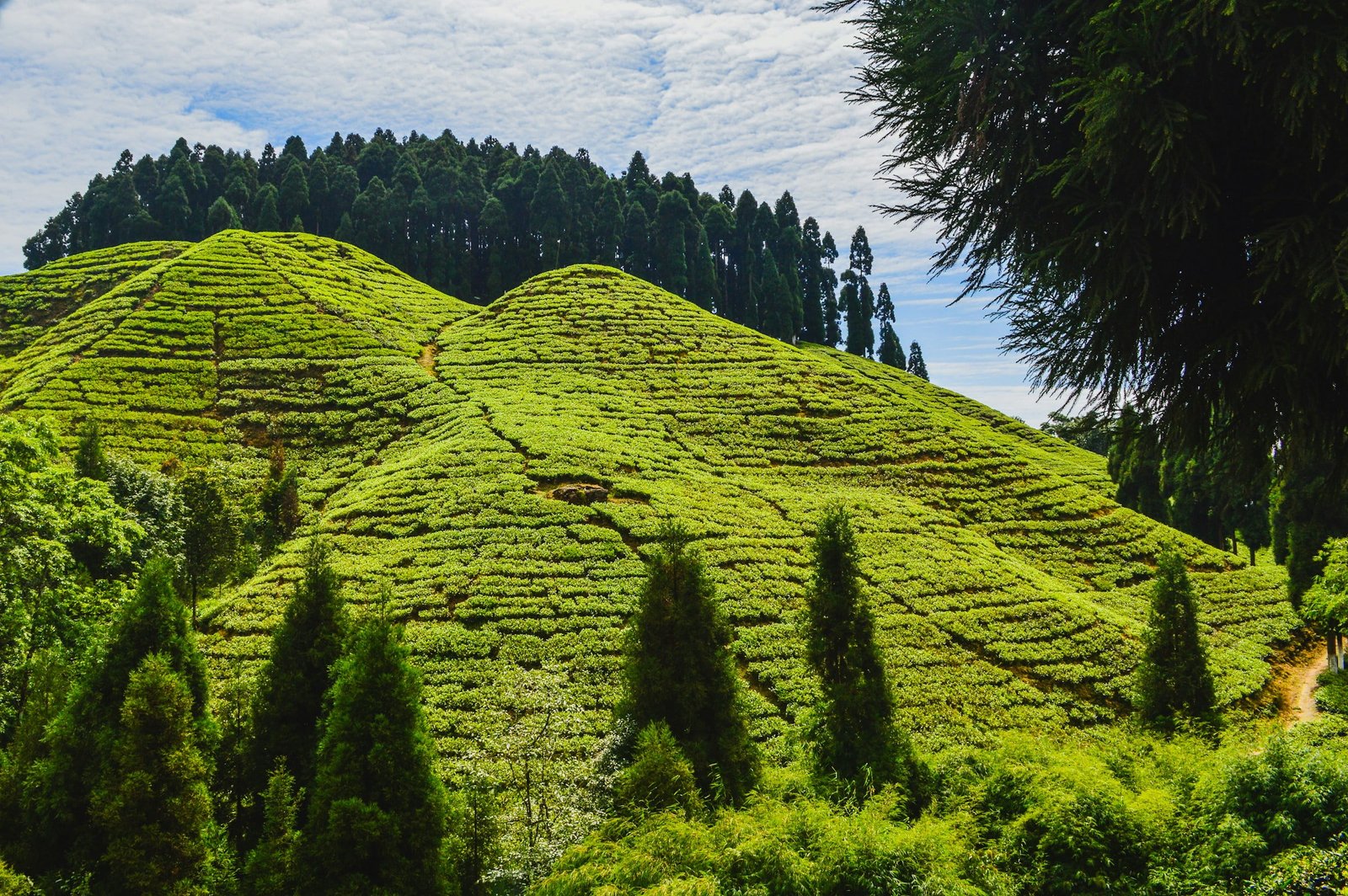Darjeeling tea, known as the “Champagne of Teas,” holds a revered position in the world of fine teas. Its story is one of adventure, colonization, and the unique geography of the Darjeeling region that together crafted a tea unlike any other. This article delves into the rich history of Darjeeling tea, tracing its roots from the British colonial era to its current status as a globally celebrated beverage.
The Early Beginnings: A British Quest for Tea
The history of Darjeeling tea begins in the early 19th century, during the British colonial rule in India. The British Empire, eager to establish a reliable source of tea outside of China, began exploring various regions of India for tea cultivation. The East India Company, the trading giant of the British Empire, played a pivotal role in this search, focusing on areas with climates similar to the tea-growing regions of China.
In 1823, tea plants were found growing wild in Assam, which marked the beginning of tea cultivation in India. However, the focus soon shifted to the hilly regions of Darjeeling in West Bengal, known for their cool, misty climate and rich soils—ideal conditions for producing high-quality tea.
Dr. Archibald Campbell and the Introduction of Tea to Darjeeling
The introduction of tea to Darjeeling is credited to Dr. Archibald Campbell, a British civil surgeon who was appointed as the superintendent of Darjeeling in 1839. Fascinated by the potential of this region, Campbell began experimenting with tea cultivation in 1847. He planted Chinese tea seeds (Camellia sinensis) in his garden at an altitude of approximately 7,000 feet. These early experiments were successful, revealing that Darjeeling’s unique geography and climate were perfectly suited for producing tea with a distinct and refined flavor.
The Establishment of Tea Gardens in Darjeeling
Encouraged by Campbell’s success, the British government and private entrepreneurs began establishing tea gardens across Darjeeling in the 1850s. The first commercial tea gardens, such as Makaibari, Steinthal, and Aloobari, were established during this period, laying the foundation for what would become one of the world’s most prestigious tea-growing regions.
By the 1860s, the Darjeeling region had over 39 tea gardens, covering more than 1,000 acres. The tea industry quickly became the backbone of the local economy, with each estate developing its own methods of cultivation and processing. The unique terroir of Darjeeling—its high altitude, consistent rainfall, and cool climate—contributed to the creation of tea with a light, floral aroma and a muscatel flavor, which became highly sought after in international markets.
The Influence of Geography on Darjeeling Tea
Darjeeling’s geography plays a crucial role in the distinctive characteristics of its tea. Nestled in the foothills of the Eastern Himalayas, the tea gardens of Darjeeling are situated at altitudes ranging from 2,000 to 7,000 feet above sea level. The region’s steep slopes and cool, misty weather create a microclimate that is ideal for slow-growing tea plants. This slow growth allows the leaves to develop complex flavors that are unique to Darjeeling tea.
The rich, loamy soils of Darjeeling, combined with the natural drainage provided by the region’s hilly terrain, ensure that the tea plants are well-nourished without becoming waterlogged. The frequent mist and cloud cover protect the delicate tea leaves from harsh sunlight, further enhancing their quality. The result is a tea that is light yet complex, with a characteristic floral aroma and a subtle sweetness that has captivated tea drinkers for generations.
Darjeeling Tea’s Rise to Global Prominence
By the late 19th century, Darjeeling tea had gained a reputation as a premium product, and its popularity spread rapidly across Europe and beyond. The British government recognized the potential of Darjeeling tea as a luxury item and promoted it heavily in international markets. The tea’s unique flavor, combined with its association with the exotic and picturesque region of Darjeeling, made it a favorite among the European aristocracy.
Darjeeling tea’s global prominence continued to grow in the 20th century, with demand outstripping supply. The tea’s association with quality and exclusivity was further cemented when it was granted Protected Geographical Indication (PGI) status by the European Union in 2004. This designation ensures that only tea grown, processed, and manufactured in the Darjeeling region can be labeled as “Darjeeling Tea,” protecting the integrity and reputation of this iconic product.
The Legacy of Darjeeling Tea
Today, Darjeeling tea is celebrated not only for its exquisite flavor but also for its rich history and cultural significance. The tea industry remains a vital part of Darjeeling’s economy, providing livelihoods for thousands of people and preserving a tradition that has been passed down through generations. The legacy of Darjeeling tea is one of resilience, innovation, and a deep connection to the land from which it originates.
As you enjoy a cup of Darjeeling tea, you are not just savoring a beverage—you are partaking in a centuries-old tradition that embodies the spirit of the Himalayas and the history of a region that has become synonymous with the finest tea in the world.
The history of Darjeeling tea is a remarkable story of discovery, innovation, and the profound impact of geography on the quality and character of tea. From its origins in the British colonial era to its status as a globally recognized luxury product, Darjeeling tea has earned its place as the “Champagne of Teas.” The unique combination of Darjeeling’s high-altitude geography, cool climate, and rich soils has created a tea that is truly one of a kind. As you sip on a cup of Darjeeling tea, you are not only enjoying a delicious beverage but also experiencing a piece of history that has been lovingly preserved for over a century.


